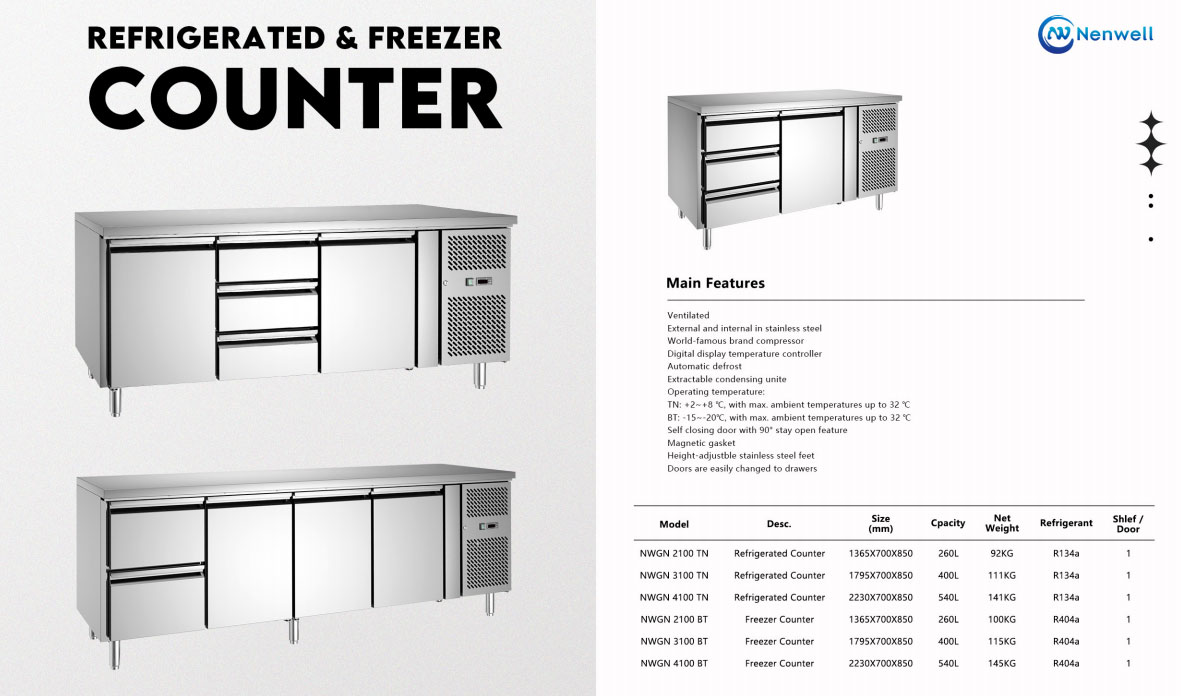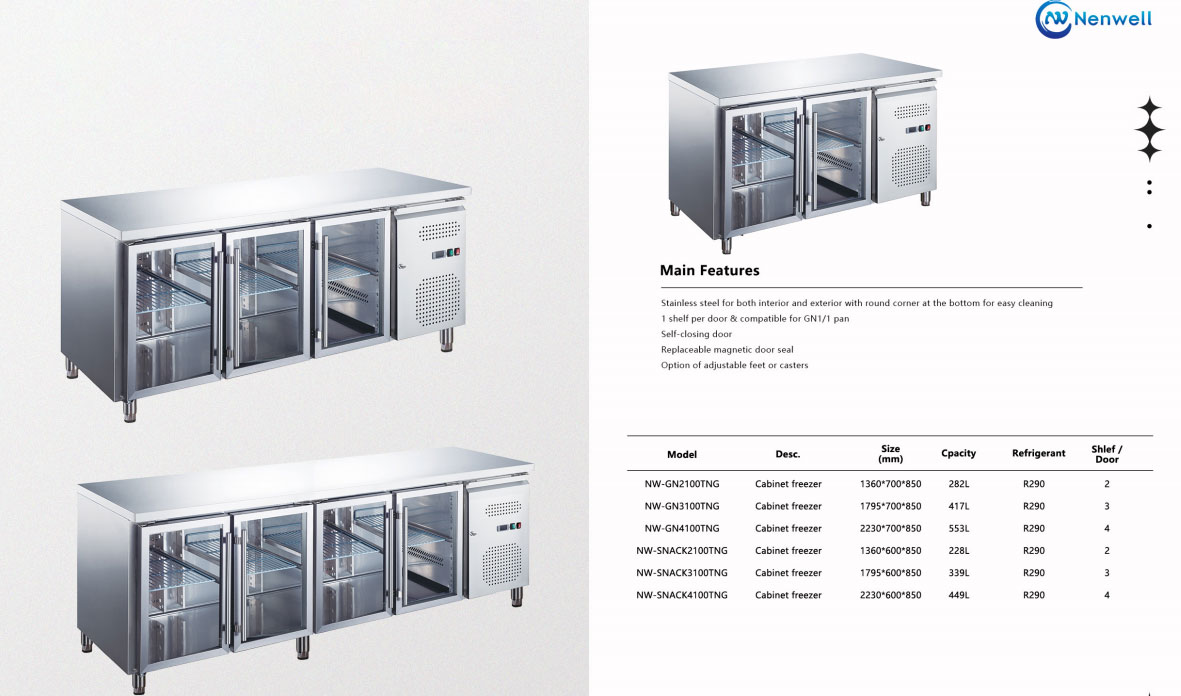In the context of the development trend of the catering industry, kitchen freezers have become a core infrastructure for catering establishments, with tens of thousands of units purchased annually. According to data from the China Chain Store & Franchise Association, the food waste rate in commercial settings reaches 8% – 12%. However, high-quality stainless steel freezers can extend the freshness period of frozen food by over 30% and reduce the waste rate to below 5%. Especially against the backdrop of the pre-made food industry growing at an annual rate of over 20%, as a key piece of equipment for low-temperature storage, it is directly related to food quality and the bottom line of food safety, becoming a crucial carrier for kitchen functionality upgrades.
What Should Be Noted When Purchasing Stainless Steel Freezers in Bulk?
It is necessary to pay attention to the quality and functions of refrigeration equipment. Generally, considerations can be made from the equipment’s advantages and functional parameters. The following are specific quality references:
(1) Irreplaceable Corrosion Resistance Advantage
The kitchen environment is humid and full of oil, grease, acids, and alkalis. Cabinets made of ordinary cold-rolled steel are prone to rust and corrosion. In contrast, cabinets made of SUS304 food-grade stainless steel can withstand 500 hours without rusting in the salt spray test specified in GB/T 4334.5 – 2015. They can maintain their surface integrity even after long-term contact with common kitchen seasonings such as soy sauce and vinegar. The service life of such cabinets can reach 10 – 15 years, nearly double that of ordinary materials, significantly reducing equipment renewal costs.
(2) Antibacterial Properties
To strengthen the defense line of food safety, high-quality stainless steel freezers enhance their antibacterial effects through technologies such as nano-silver coatings and cordierite ceramic liners. The Haier BC/BD – 300GHPT model, for example, has been tested to have an antibacterial rate of 99.99% against Escherichia coli and Staphylococcus aureus. The door gaskets can also effectively inhibit six types of molds, including Aspergillus niger. This property reduces the risk of cross-contamination of food in household settings by 60%, meeting the requirements of the National Food Safety Standard for Hygiene of Tableware Disinfection, and becoming an important guarantee for catering compliance.
(3) Structural Stability and Space Utilization
Stainless steel freezers have a compressive strength of over 200MPa and have no risk of shrinkage or deformation in low-temperature environments. With a modular design, space utilization can be increased by 25%. The use of tiered drawer designs improves food access efficiency by 40%. They seamlessly integrate with the overall kitchen. In 2024, the market share of such products reached 23.8%, doubling compared to 2019.
(4) Ease of Cleaning
Designed to meet the high-frequency usage requirements of commercial kitchens, the entire cabinet has a stainless steel surface with a smoothness of Ra≤0.8μm, and the oil residue rate is less than 3%. It can be quickly cleaned with a neutral detergent without the need for professional maintenance. Experimental data shows that the cleaning time is 50% less than that of glass liners, and the surface remains flat without scratch residues even after 1,000 wipes, perfectly adapting to the characteristics of heavy oil stains and frequent cleaning in kitchens.
Future Prospects
The catering industry is accelerating towards energy efficiency and intelligence. The new national standard GB 12021.2 – 2025, to be implemented in 2026, will tighten the energy efficiency limit value for refrigerators and freezers from ηs≤70% to ηt≤40%, an increase of 42.9%, and is expected to phase out 20% of high-energy-consuming products. Meanwhile, the penetration rate of intelligent freezers is expected to exceed 38% in 2025. Functions such as IoT temperature control and energy consumption monitoring will become standard features. The market size of built-in models is expected to reach 16.23 billion yuan. The application of environmentally friendly refrigerants and variable-frequency technology has reduced the industry’s average energy consumption by 22% compared to 2019.
Precautions
Maintenance should follow the principles of “preventing corrosion, protecting the seal, and controlling the temperature.” For daily cleaning, use a soft cloth with a neutral detergent and avoid using hard objects like steel wool to prevent scratches.
Wipe the door gaskets with warm water once a week to maintain their sealing performance, which can reduce cold loss by 15%. It is recommended to check the compressor cooling holes every six months and have professional maintenance once a year.
It should be particularly noted that acidic foods should be avoided from direct contact with the cabinet. When thawing at low temperatures, the temperature fluctuation should not exceed ±5°C to prevent condensation water from causing corrosion.
Kitchen stainless steel freezers, with their material advantages of corrosion resistance and antibacterial properties, as well as performance upgrades in energy efficiency, meet the rigid demand for food safety in households and also adapt to the compliance requirements of commercial settings. With the implementation of new energy efficiency standards and the penetration of intelligent technologies, choosing products that balance energy efficiency ratings, antibacterial certifications, and scene adaptability, and conducting regular maintenance, can ensure that this “freshness – preserving tool” continues to safeguard dietary health.
Post time: Oct-14-2025 Views:


